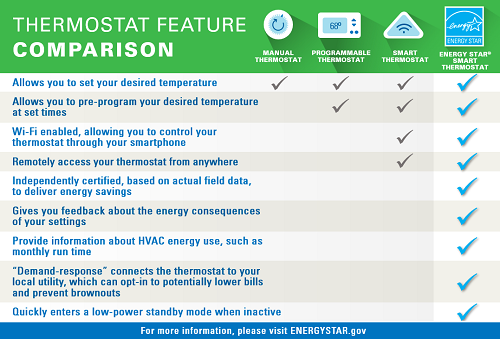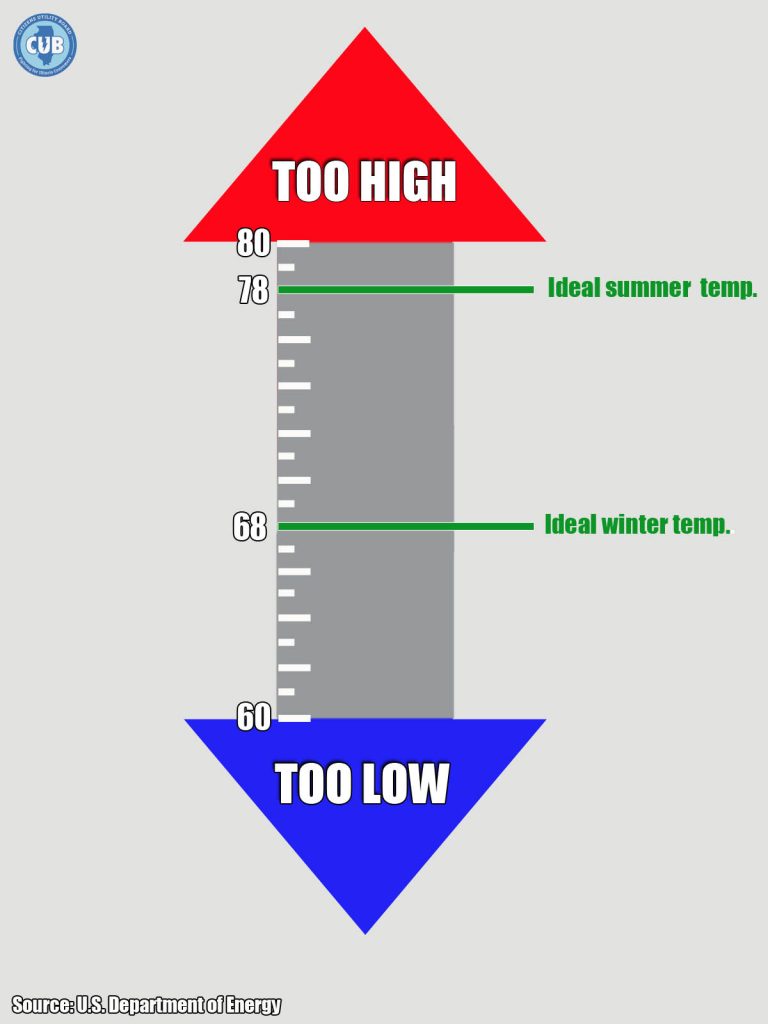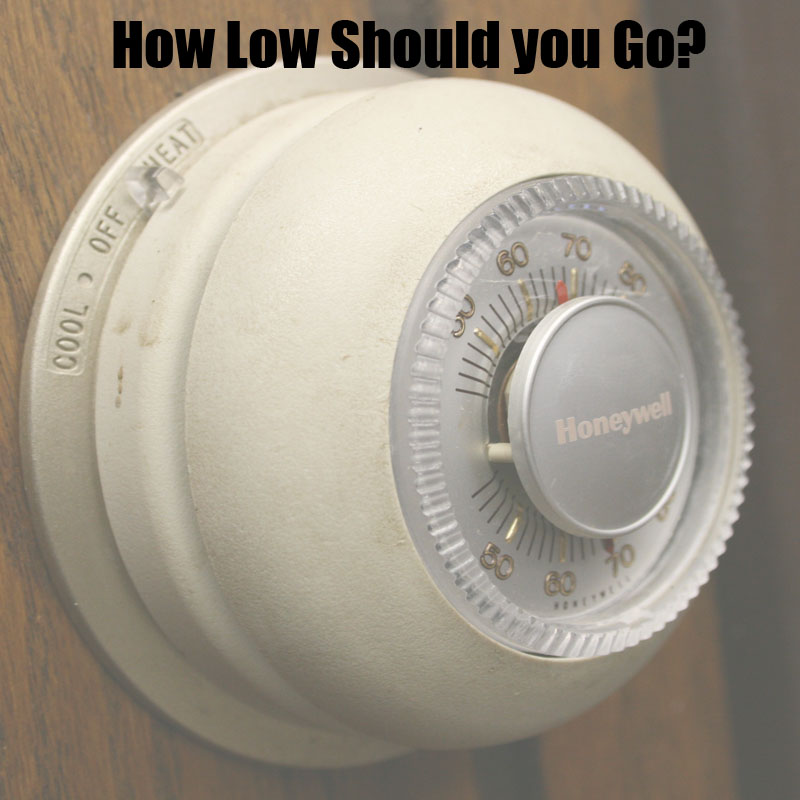Check Best Thermostat Pricing in Amazon
** As an Amazon Associate, I earn from qualifying purchases.
You can set your thermostat as low as 55°F in winter. This prevents pipes from freezing and saves energy.
Setting your thermostat to the right temperature can save energy and reduce heating costs. During winter, many homeowners wonder how low they can set their thermostats without causing problems. Lowering the thermostat to 55°F is generally safe and efficient. This temperature prevents pipes from freezing and maintains a comfortable environment.
Additionally, it helps in reducing energy bills significantly. Adjusting your thermostat wisely can lead to substantial savings and a more sustainable household. Understanding the optimal settings for your thermostat ensures comfort and efficiency throughout the cold months. Proper thermostat management is crucial for both financial savings and environmental impact.
- Energy Savings Through Thermostat Management
- Deciphering The Lowest Comfortable Temperature
- The Winter Setting: How Low Is Too Low?
- The Summer Twist: Optimal Higher Settings
- Smart Thermostats: Automating Energy Savings
- The Role Of Insulation In Thermostat Settings
- Health Considerations At Lower Temperatures
- Energy Wins: Success Stories And Case Studies
- Practical Tips For Optimizing Thermostat Use
- Future Trends In Energy Management And Thermostat Technology
- Frequently Asked Questions
- Conclusion
Energy Savings Through Thermostat Management
Managing your thermostat can save energy and money. Knowing the right settings helps achieve this. Let’s explore how to balance comfort and efficiency.
The Link Between Thermostat Settings And Energy Consumption
Setting your thermostat affects energy use. Lower settings in winter and higher in summer save energy. Every degree you lower in winter saves up to 3% on heating bills. Similarly, raising the temperature in summer can reduce cooling costs.
| Season | Recommended Temperature | Energy Savings |
|---|---|---|
| Winter | 68°F (20°C) | Save up to 3% per degree lowered |
| Summer | 78°F (26°C) | Save up to 3% per degree raised |
Balancing Comfort And Efficiency
Balancing comfort and energy savings is key. Use a programmable thermostat to adjust settings automatically. Set it lower when you are asleep or away to save energy without sacrificing comfort.
- Set it to 68°F (20°C) in winter during the day.
- Lower it to 60°F (15°C) at night or when away.
- Set it to 78°F (26°C) in summer during the day.
- Raise it to 85°F (29°C) when away.
Small changes in thermostat settings can lead to big savings. Adjust settings gradually and monitor comfort levels. Use fans or blankets to help maintain comfort without changing the thermostat.

Credit: www.energystar.gov
Deciphering The Lowest Comfortable Temperature
Setting your thermostat to the lowest comfortable temperature can save energy and money. But how low can you really go? Understanding the factors that influence indoor thermal comfort helps in making an informed decision. Let’s explore the key considerations.
Factors Influencing Indoor Thermal Comfort
Several factors affect how comfortable you feel indoors. These include:
- Humidity Levels: Higher humidity can make a lower temperature feel warmer.
- Air Movement: Fans can help distribute air and make a lower temperature feel comfortable.
- Clothing: Wearing warmer clothing can allow for a lower thermostat setting.
- Activity Levels: More physical activity generates body heat, allowing for a cooler setting.
Personal Preferences And Adaptive Models
Comfort levels vary from person to person. Some people prefer warmer environments, while others like it cooler. This personal preference plays a significant role in determining the lowest comfortable temperature.
The adaptive model of thermal comfort suggests that people can adjust to different temperatures. This adjustment can be influenced by their clothing, activity level, and even psychological factors.
To find your lowest comfortable temperature, experiment with the thermostat settings. Start by lowering the temperature gradually. Observe how you feel and make adjustments as needed.
Here’s a simple table summarizing key points:
| Factor | Impact on Comfort |
|---|---|
| Humidity Levels | Higher humidity makes a lower temperature feel warmer |
| Air Movement | Fans help distribute air and enhance comfort at lower temperatures |
| Clothing | Wearing warmer clothing allows for lower thermostat settings |
| Activity Levels | More physical activity generates body heat, making cooler settings comfortable |
Finding the perfect setting for your thermostat helps in achieving both comfort and energy efficiency. By understanding these factors, you can set your thermostat to a temperature that keeps you comfortable while saving on energy costs.
The Winter Setting: How Low Is Too Low?
Winter brings cold temperatures and higher heating bills. Many wonder, “How low can you set your thermostat?” Setting it too low can cause problems, but adjusting it correctly can save money and energy.
Guidelines For Winter Thermostat Settings
To stay comfortable and save energy, follow these guidelines:
- During the day: Set the thermostat to 68°F while you are at home.
- At night or when away: Lower it to 60°F to 62°F.
- Use a programmable thermostat: It adjusts automatically based on your schedule.
These settings maintain comfort and reduce energy costs.
Risks Of Setting The Thermostat Too Low
Setting the thermostat too low can cause several issues:
| Risk | Explanation |
|---|---|
| Pipes Freezing | Pipes can freeze and burst if temperatures drop too low. |
| Health Problems | Cold indoor temperatures can cause health issues, especially for the elderly and young children. |
| Increased Humidity | Cold air holds less moisture, leading to dry skin and respiratory issues. |
Be mindful of these risks to keep your home safe and comfortable during winter.

Credit: www.citizensutilityboard.org
The Summer Twist: Optimal Higher Settings
The summer heat can be relentless, but did you know that setting your thermostat higher can actually keep you cooler? This strategy, known as the ‘Summer Twist,’ not only saves energy but also keeps your home comfortable. Let’s dive into the optimal settings for your thermostat during the summer months.
Recommended Thermostat Settings For Summer
During summer, the recommended thermostat setting is 78°F (25.5°C). This setting balances comfort and energy efficiency. If you leave home, set the thermostat to 85°F (29.5°C) or higher.
- 78°F (25.5°C) for when you’re at home
- 85°F (29.5°C) or higher when you’re away
These settings can reduce your energy bill by up to 10%.
The Impact Of Humidity On Perceived Temperature
Humidity plays a significant role in how we perceive temperature. High humidity makes it feel hotter than it actually is. Using a dehumidifier can make your home feel cooler even if the temperature is set higher.
| Temperature | Humidity Level | Perceived Temperature |
|---|---|---|
| 78°F (25.5°C) | 60% | 80°F (26.6°C) |
| 78°F (25.5°C) | 40% | 76°F (24.4°C) |
By managing humidity, you can keep your thermostat higher without sacrificing comfort.
Smart Thermostats: Automating Energy Savings
Smart thermostats are revolutionizing how we control home temperatures. These devices bring convenience and savings. They adjust settings based on your schedule. This means no more wasteful heating or cooling.
How Smart Thermostats Learn From Your Habits
Smart thermostats observe your daily routines. They learn when you wake up, leave, and return home. This helps them create a personalized schedule.
For instance, they can lower the temperature after you leave for work. They can then raise it just before you return. This automation ensures comfort and efficiency.
Some models also use sensors and geofencing. Sensors detect room occupancy. Geofencing tracks your phone’s location. This further refines their ability to save energy.
Comparing Energy Savings With Traditional Vs. Smart Thermostats
Traditional thermostats require manual adjustments. This often leads to inconsistent settings. Smart thermostats, on the other hand, automate these changes.
| Feature | Traditional Thermostat | Smart Thermostat |
|---|---|---|
| Manual Adjustment | Yes | No |
| Learning Capabilities | No | Yes |
| Remote Control | No | Yes |
| Energy Reports | No | Yes |
| Cost Savings | Low | High |
Smart thermostats can save up to 15% on heating and cooling bills. This is because they minimize energy waste. Traditional thermostats lack this precision.
Smart thermostats offer convenience and savings. They learn from your habits and automate energy savings. They outperform traditional thermostats in many areas.
The Role Of Insulation In Thermostat Settings
Understanding how insulation affects your thermostat settings can help you save money. Proper insulation keeps your home warm in winter and cool in summer. This reduces the need to constantly adjust your thermostat. Let’s explore how insulation plays a crucial role in thermostat settings.
Enhancing Energy Efficiency With Proper Insulation
Proper insulation significantly enhances energy efficiency. Well-insulated homes require less energy to maintain a comfortable temperature. This means your heating and cooling systems work less, leading to lower energy bills.
Consider the following types of insulation:
- Fiberglass insulation: Common and cost-effective.
- Foam board insulation: High thermal resistance, good for walls and floors.
- Spray foam insulation: Seals gaps and cracks, excellent for hard-to-reach areas.
Installing the right insulation can make a big difference in energy efficiency. It keeps your home comfortable all year round.
Check Best Thermostat Pricing in Amazon
** As an Amazon Associate, I earn from qualifying purchases.
The Interplay Between Insulation And Thermostat Adjustments
Insulation and thermostat settings work together. With good insulation, your home retains heat in winter and stays cool in summer. This allows you to set your thermostat lower in winter and higher in summer without sacrificing comfort.
Here’s how it works:
| Season | Insulation Effect | Thermostat Adjustment |
|---|---|---|
| Winter | Keeps heat inside | Lower thermostat settings |
| Summer | Blocks heat from entering | Higher thermostat settings |
Good insulation reduces the workload on your heating and cooling systems. This leads to less energy consumption and lower utility bills. By investing in proper insulation, you enhance your home’s energy efficiency and comfort.
Health Considerations At Lower Temperatures
Setting your thermostat lower can save energy and money. But it also impacts your health. Understanding the balance is crucial for maintaining well-being.
Cold-related Health Risks
Cold weather can cause several health problems. Hypothermia is a severe condition when your body loses heat faster than it can produce it. It can be life-threatening. Symptoms include shivering, confusion, and drowsiness.
Frostbite occurs when your skin and tissues freeze. It commonly affects fingers, toes, nose, and ears. Frostbite can lead to permanent damage. Watch for numbness, white or grayish-yellow skin, and hard or waxy-looking skin.
Respiratory issues can also arise. Cold air can irritate your lungs. It may trigger asthma attacks or worsen existing respiratory conditions. Keep your living space warm to protect your respiratory health.
Safe Thermostat Settings
Setting your thermostat to a safe temperature is vital. Experts recommend keeping your home at a minimum of 68°F (20°C) during the day. At night, you can lower it slightly, but not below 60°F (16°C).
Avoid setting your thermostat too low. This helps prevent cold-related health risks. Use a programmable thermostat to maintain consistent temperatures. It can adjust settings automatically based on your schedule.
Balancing Energy Savings With Health And Well-being
Balancing energy savings and health is essential. Here are some tips to achieve this balance:
- Layer up: Wear warm clothing to stay comfortable without raising the thermostat.
- Use blankets: Keep warm with extra blankets while sleeping or relaxing.
- Seal drafts: Insulate doors and windows to prevent heat loss.
- Stay active: Physical activity generates body heat and keeps you warm.
Consider the health of elderly family members and young children. They are more vulnerable to cold. Keep their living areas slightly warmer. Use space heaters safely to warm specific rooms.
| Time | Recommended Temperature |
|---|---|
| Daytime | 68°F (20°C) |
| Nighttime | 60°F (16°C) |
Remember, your health should not be compromised for energy savings. Adjust your thermostat wisely. Ensure a warm and healthy environment for everyone at home.

Credit: www.citizensutilityboard.org
Energy Wins: Success Stories And Case Studies
Lowering your thermostat can lead to big energy savings. Many people have shared their success stories. These real-life examples show how small changes make a big difference.
Real-life Examples Of Significant Energy Savings
Many families have saved money by managing their thermostats. Here are some inspiring stories:
- The Johnson Family: The Johnsons lowered their thermostat by 5 degrees. They saved $200 in one winter.
- Sarah’s Apartment: Sarah used a smart thermostat. She saved 15% on her monthly bill.
- Eco-Friendly Office: A small office turned down their thermostat by 3 degrees. They cut their energy use by 10%.
Lessons Learned From Effective Thermostat Management
These stories teach us valuable lessons. Here are the key takeaways:
- Use Smart Thermostats: Smart thermostats adjust based on your habits. They save energy without much effort.
- Lower by Degrees: Even a small change, like 1-2 degrees, leads to significant savings.
- Consistent Settings: Keep your thermostat at a steady temperature. This avoids energy spikes.
Here is a table showing the potential savings:
| Temperature Drop (°F) | Potential Savings (%) |
|---|---|
| 1-2 | 3-5 |
| 3-4 | 6-10 |
| 5-6 | 11-15 |
These examples show that lowering your thermostat is effective. You save money and energy, helping the planet.
Practical Tips For Optimizing Thermostat Use
Managing your thermostat efficiently can save money and energy. There are simple ways to optimize your thermostat settings. These tips will help you stay comfortable while being eco-friendly.
Seasonal Thermostat Adjustment Strategies
Adjusting your thermostat with the seasons is crucial. During winter, set the thermostat to 68°F when you’re at home and awake. Lower it while you’re asleep or away. In summer, aim for 78°F when you’re at home and increase it when you’re out. These settings balance comfort and energy savings.
Incorporating Weather Forecasts Into Thermostat Settings
Weather forecasts can help you plan your thermostat settings. If a cold front is expected, raise the temperature slightly beforehand. For a heatwave, lower the settings to pre-cool your home. This proactive approach keeps your home comfortable in extreme conditions.
Future Trends In Energy Management And Thermostat Technology
Future Trends in Energy Management and Thermostat Technology
Energy management is changing quickly. New thermostat technology is making homes smarter. These changes help save energy and money. Let’s explore the future of this exciting field.
Innovations In Thermostat Design And Functionality
Thermostats are becoming more advanced. Smart thermostats can learn your schedule. They adjust the temperature automatically. This saves energy and keeps you comfortable.
Some thermostats now have voice control. You can change the temperature by speaking. This makes it easier to stay comfortable. No more getting up to adjust the thermostat.
New models also have remote access. You can control your thermostat from your smartphone. This is great for people who travel. You can make sure your home is the right temperature when you return.
Predicting The Next Big Thing In Energy Efficiency
What’s next in energy efficiency? AI-powered thermostats could be the answer. These thermostats use artificial intelligence to make better decisions. They learn from your habits and preferences.
Energy-saving algorithms are another exciting trend. These algorithms help thermostats use less energy. They find the best times to heat or cool your home. This saves money on your energy bills.
Some companies are working on self-sustaining thermostats. These devices generate their own power. They use solar panels or other renewable energy sources. This reduces their environmental impact.
| Feature | Benefit |
|---|---|
| Smart Learning | Saves energy by adjusting automatically |
| Voice Control | Easy to use with voice commands |
| Remote Access | Control from anywhere with your smartphone |
| AI-Powered | Makes better decisions based on your habits |
| Energy-Saving Algorithms | Finds the best times to heat or cool your home |
| Self-Sustaining | Generates its own power, reducing impact |
The future of thermostat technology looks bright. These innovations will make homes more efficient and comfortable. Stay tuned for the next big thing in energy management!
Frequently Asked Questions
What Is The Lowest Temperature You Can Set Your Thermostat At?
The lowest temperature to set your thermostat is typically 60°F (15°C). Setting it lower can risk freezing pipes.
Is 60 Too Low For A Thermostat?
Setting a thermostat to 60°F can be too low for comfort. It may also increase heating costs and strain your HVAC system.
How Low Can I Set The Temperature In My House?
You can set your house temperature as low as 60°F (15°C). Avoid going lower to prevent pipe freezing and ensure comfort.
How Low Can You Set Your Thermostat Before Pipes Freeze?
Set your thermostat no lower than 55°F to prevent pipes from freezing. Insulate pipes for extra protection.
Conclusion
Setting your thermostat lower can save energy and reduce bills. Aim for 68°F during winter days and 60°F at night. Experiment to find a comfortable balance. Small adjustments make a big difference in energy efficiency. Stay warm and eco-friendly by optimizing your thermostat settings.
Check Best Thermostat Pricing in Amazon
** As an Amazon Associate, I earn from qualifying purchases.

